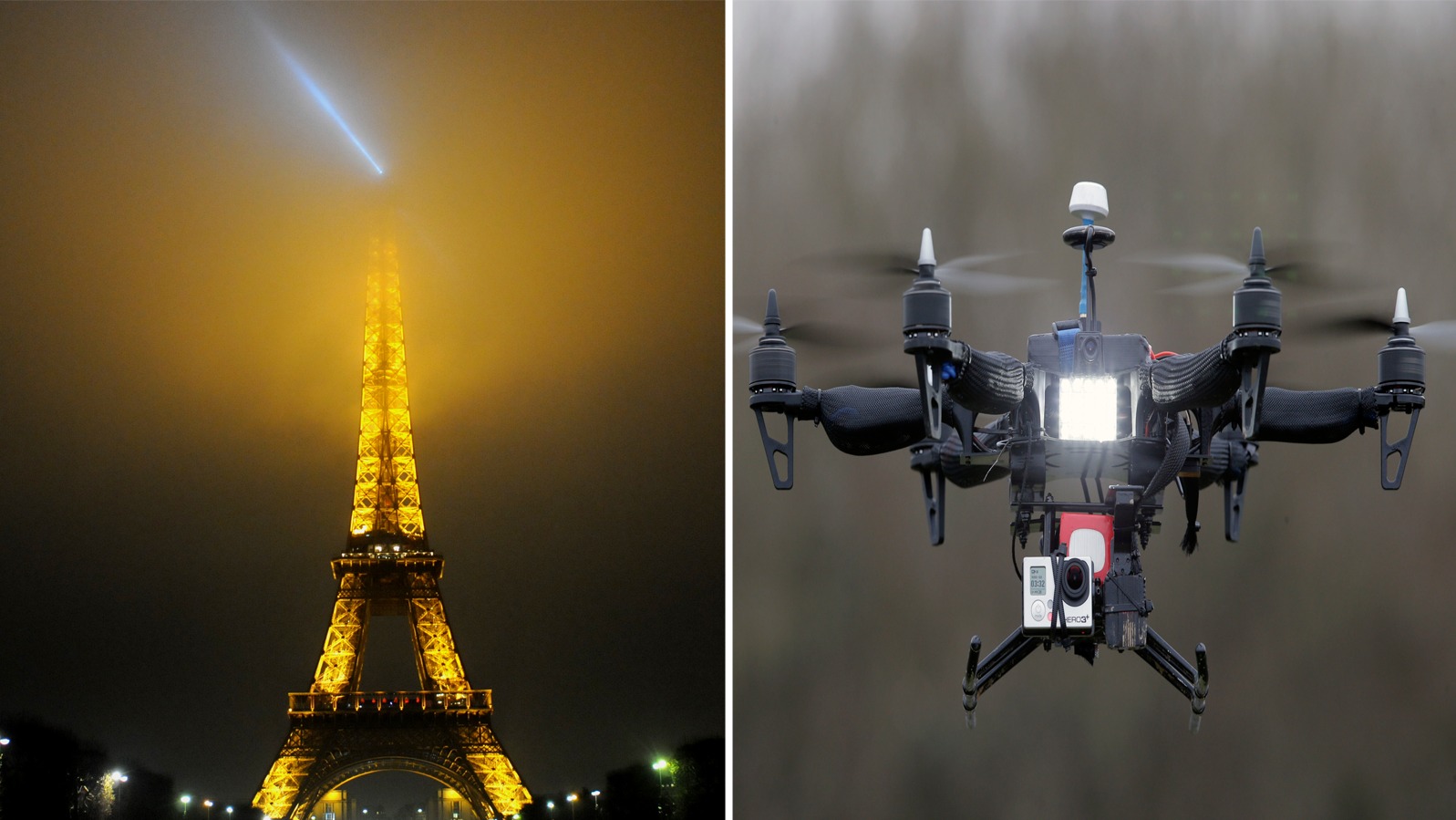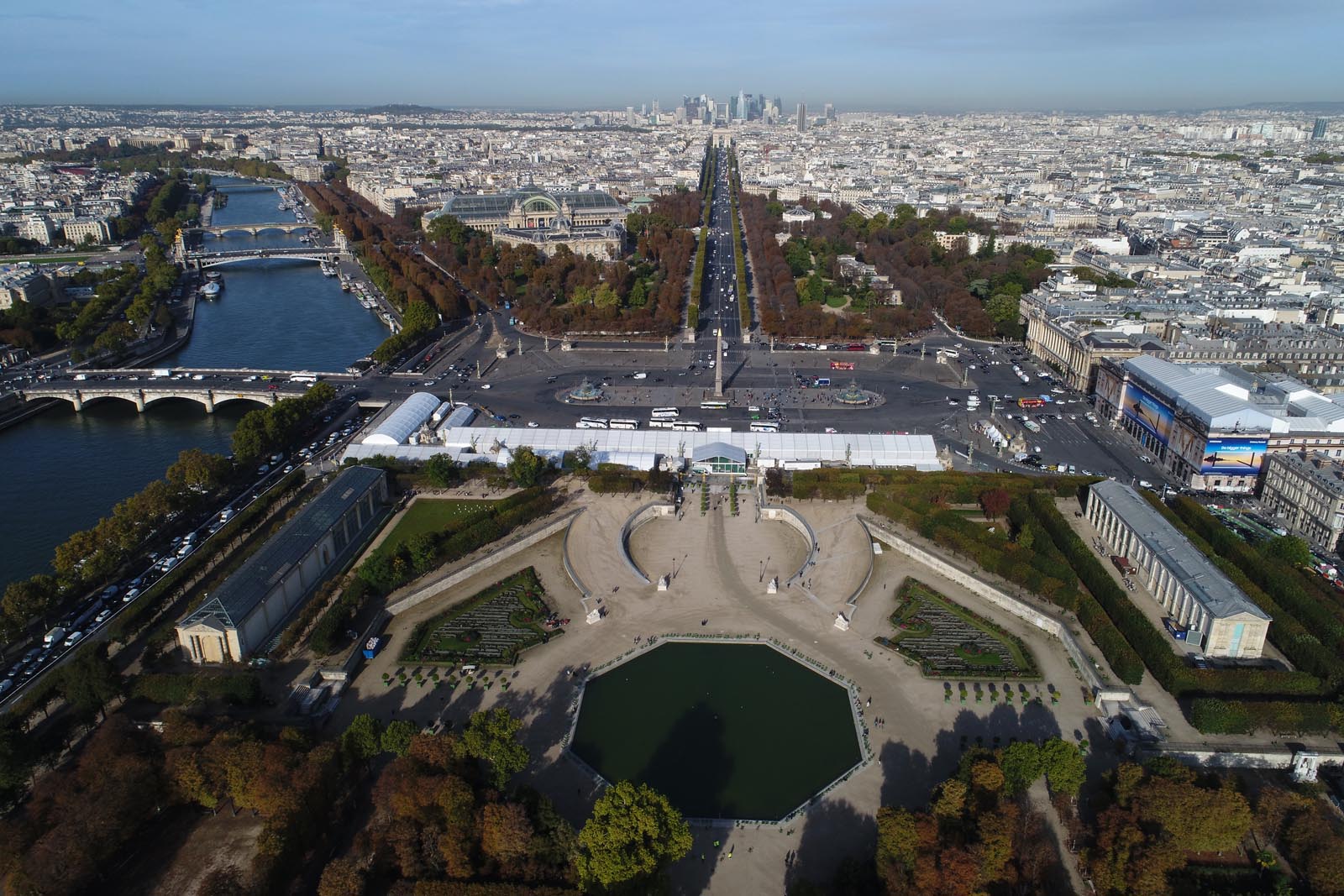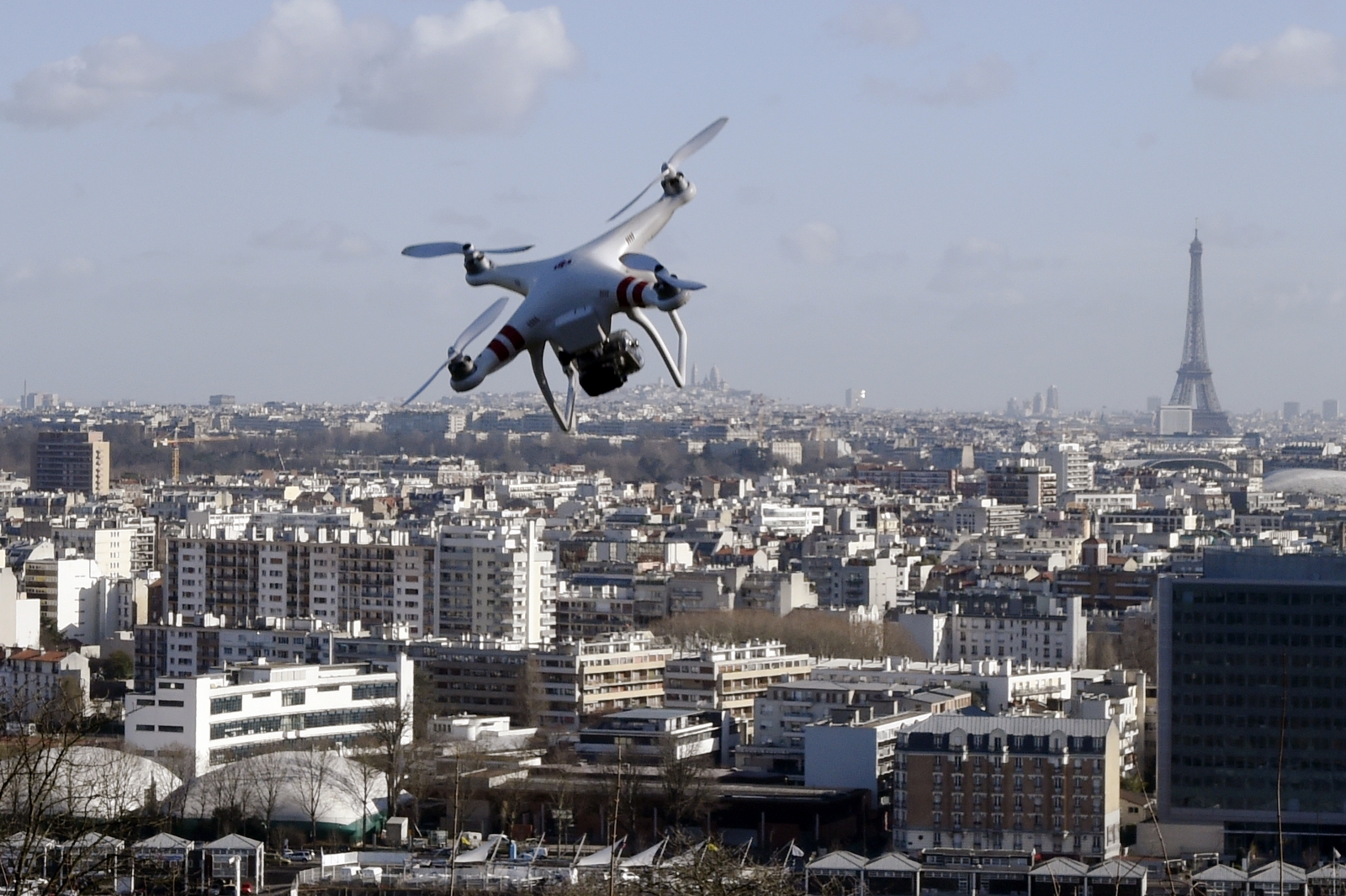Drone in Paris: Imagine soaring above the City of Lights, capturing breathtaking views of the Eiffel Tower at sunset or meticulously inspecting the intricate details of a historic building. This guide delves into the world of drones in Paris, exploring the regulations, popular activities, safety concerns, and economic impact of this rapidly growing technology.
From understanding the permit process for commercial flights to appreciating the unique photographic opportunities, we’ll cover everything you need to know about operating drones safely and legally in the heart of France. We’ll also look at the broader implications of drone technology on Parisian life, its economic contributions, and its potential for future growth.
Drone Regulations in Paris
Navigating the airspace above Paris with a drone requires a thorough understanding of the city’s specific regulations. These rules, designed to ensure safety and security, cover various aspects of drone operation, from permits to operational limitations. Failure to comply can result in significant penalties.
Current Drone Laws and Regulations in Paris
French regulations, and by extension Parisian regulations, largely follow European Union Aviation Safety Agency (EASA) guidelines. These rules categorize drones based on weight and intended use, dictating operational restrictions and necessary certifications. For example, heavier drones often require more extensive pilot training and permissions. Flight restrictions exist near airports, sensitive sites (like government buildings), and crowded areas.
Thinking about flying a drone in Paris? You’ll need to know the rules and regulations, which can be tricky. Check out this super helpful resource for all the info you need before you go: drone in paris. Knowing the local laws beforehand will save you headaches and ensure your Parisian drone adventures are smooth sailing.
Safe and legal drone flights are key to enjoying the city from above!
No-fly zones are clearly defined and regularly updated.
Commercial Drone Flight Permits in Paris
Obtaining a permit for commercial drone flights in Paris involves a multi-step process. This typically begins with registering the drone and the pilot with the relevant French authorities. A detailed flight plan, including proposed flight paths, altitudes, and dates, must be submitted and approved. Insurance coverage demonstrating liability for potential damages is also a crucial requirement. The process can take several weeks, and approval isn’t guaranteed.
Comparison of Parisian Drone Regulations with Other Major European Cities
While broadly aligned with EASA standards, specific regulations vary across European cities. London, for example, might have stricter limitations on drone flights near historical landmarks, while Amsterdam might focus more on noise pollution restrictions. Paris tends to have a robust system emphasizing safety and security in its densely populated environment. Each city tailors its regulations to its unique urban landscape and potential risks.
Key Aspects of Parisian Drone Regulations
| Regulation Type | Specific Rule | Penalty for Violation | Applicable Areas |
|---|---|---|---|
| Registration | All drones above a certain weight must be registered. | Fine, drone confiscation | Entire Paris |
| Flight Restrictions | No flight within a certain radius of airports, monuments, or crowded areas. | Fine, imprisonment | Specific zones around airports, landmarks, and populated areas |
| Operational Limits | Maximum flight altitude restrictions. | Fine, license suspension | Entire Paris |
| Commercial Flights | Requires specific permits and insurance. | Significant fines, legal action | All commercial drone operations |
Popular Drone Activities in Paris: Drone In Paris

Drones have become increasingly popular in Paris, offering unique perspectives and capabilities for various applications. From capturing breathtaking aerial footage to facilitating efficient inspections, their uses are diverse and constantly evolving.
Common Drone Uses in Paris
Photography and videography are the most prevalent drone activities. The city’s iconic landmarks, charming streets, and historical architecture provide a stunning backdrop for captivating aerial shots. Beyond aesthetics, drones are also used for infrastructure inspections, construction monitoring, and even security purposes. Their ability to access hard-to-reach areas provides significant advantages in these fields.
Unique Perspectives and Opportunities
Drones offer unparalleled perspectives of Paris’s famous landmarks. Imagine capturing the Eiffel Tower at sunset, the intricate details of the Louvre Museum, or the sprawling beauty of the Seine River from a bird’s-eye view. These perspectives are impossible to achieve with traditional methods, making drone footage highly sought after for tourism and media purposes. Furthermore, the ability to capture time-lapse footage allows for unique artistic expressions.
Examples of Creative Drone Projects

Numerous artists and filmmakers have utilized drones to create stunning visual narratives in Paris. For example, a recent project used drone footage to showcase the city’s transformation throughout different seasons, highlighting the changing landscapes and the impact of time. Another project used drone technology to create a virtual tour of the city’s hidden courtyards and passageways.
Popular Drone Filming Locations in Paris
- Eiffel Tower (with necessary permissions): Offers iconic views, but strict regulations apply.
- Seine River: Provides dynamic perspectives of bridges and cityscapes, but requires careful navigation around boats and people.
- Tuileries Garden: Offers beautiful views of the Louvre and surrounding areas, but requires adherence to park regulations.
- Montmartre: Provides stunning views of the city, but requires careful navigation around crowds and buildings.
- Canal Saint-Martin: Offers unique perspectives of the canal and surrounding architecture, but needs consideration for low-flying obstacles.
Drone-Related Safety Concerns in Paris
Operating drones in a dense urban environment like Paris presents several safety challenges. The potential for accidents, collisions, and privacy violations necessitates strict adherence to safety protocols and regulations.
Thinking about flying drones in Paris? You’ll need a powerful system to handle the high-resolution video and image processing. Check out the specs using a tool like cpu z to ensure your drone’s processor can keep up with the demands of capturing the City of Lights. Knowing your drone’s CPU capabilities is key for smooth flight and stunning footage in Paris.
Potential Safety Risks
Collisions with buildings, aircraft, or other drones are significant concerns. The high density of people and obstacles in Paris increases the risk of accidents. Unintended intrusion into private spaces or the capture of sensitive information are privacy concerns that must be addressed. Malfunctioning equipment or loss of signal can also lead to uncontrolled drone behavior.
Safety Measures for Drone Operators
Operators must conduct thorough pre-flight checks, ensuring the drone is functioning correctly and the battery is adequately charged. They should be aware of the surrounding environment, including obstacles, people, and no-fly zones. Maintaining visual line of sight with the drone is crucial, and flying in controlled airspace requires specific permissions. Having a backup plan in case of equipment failure is also vital.
Examples of Drone Incidents in Paris

While comprehensive data on drone incidents in Paris is not publicly available, anecdotal evidence suggests that collisions with buildings and unauthorized flights near airports have occurred. These incidents highlight the need for responsible operation and strict adherence to regulations. The consequences can range from fines to legal action.
Thinking about flying drones in Paris? You’ll need a powerful system to handle the high-resolution video and image processing. Check out the specs using a tool like cpu z to ensure your drone’s processor can keep up with the demands of capturing the City of Lights. Knowing your drone’s CPU capabilities is key for smooth flight and stunning footage in Paris.
Drone Operation Safety Checklist for Paris
- Check weather conditions.
- Verify no-fly zones.
- Inspect drone for damage.
- Ensure battery is fully charged.
- Maintain visual line of sight.
- Follow all relevant regulations.
- Have a backup plan.
Economic Impact of Drones in Paris
The drone industry is making a growing contribution to the Parisian economy, creating jobs and driving innovation across various sectors. While still a relatively nascent industry, its potential for future growth is significant.
Economic Contributions of Drones
Drones are creating jobs in areas such as drone manufacturing, maintenance, piloting, and data analysis. The tourism sector benefits from the stunning aerial footage used in marketing and promotional materials. Furthermore, drones are streamlining operations in construction, delivery, and security, leading to increased efficiency and cost savings.
Comparison with Other Parisian Economic Sectors
While not yet as large as traditional sectors like tourism or finance, the drone industry is experiencing rapid growth. Its contribution is expected to increase substantially in the coming years, particularly as drone technology advances and regulations become more streamlined.
Drone Utilization in Parisian Industries
In construction, drones are used for site surveys, progress monitoring, and safety inspections. Delivery services are exploring drone-based delivery systems for faster and more efficient transport of goods. Security companies are using drones for surveillance and monitoring, enhancing safety and security measures.
Potential for Future Growth
The Parisian drone market is projected to expand significantly, driven by advancements in drone technology, increased regulatory clarity, and growing adoption across various sectors. For instance, the use of drones for infrastructure inspections could significantly reduce costs and improve efficiency in maintaining Paris’s extensive infrastructure. The development of autonomous drone delivery systems holds considerable potential for revolutionizing logistics within the city.
Visual Representation of Drone Use in Paris
Drone Capturing Footage of the Eiffel Tower at Sunset
The image depicts a drone hovering gracefully above the Champ de Mars, capturing the Eiffel Tower bathed in the warm hues of a setting sun. The low-angle perspective emphasizes the tower’s height and grandeur, with the golden light casting long shadows on the surrounding landscape. The composition is carefully balanced, with the tower as the central focus and the city lights beginning to twinkle in the background.
The overall effect is one of serene beauty and majestic scale.
Drone Used for Building Inspection in a Historic District, Drone in paris
The image showcases a drone meticulously inspecting the intricate facade of a historic building in the Marais district. The drone’s camera captures the fine details of the carved stonework, the ornate window frames, and the subtle variations in the building’s texture. The image highlights the drone’s role in providing a safe and efficient method for inspecting hard-to-reach areas, allowing for the detection of potential structural issues or signs of deterioration that might otherwise go unnoticed.
Last Recap
Navigating the airspace above Paris with a drone requires careful planning and adherence to regulations. While the potential for stunning visuals and innovative applications is immense, safety and legality must remain paramount. By understanding the rules, acknowledging the risks, and embracing responsible practices, drone enthusiasts can contribute to the positive economic and cultural impact of this exciting technology in one of the world’s most iconic cities.
So, get ready to take flight – responsibly!
Q&A
What type of drone insurance is required in Paris?
Third-party liability insurance is generally required for drone operation in France, and the specific requirements may vary depending on the drone’s weight and intended use. Check with your insurance provider for details.
Are there any restricted airspace zones in Paris I should be aware of?
Yes, many areas around major landmarks and airports are restricted airspace. Consult the DGAC (French Civil Aviation Authority) website for up-to-date no-fly zones before each flight.
Where can I find information on obtaining a drone pilot license in France?
The DGAC website provides information on licensing requirements for professional drone operation in France. Depending on the type of operation, different certifications may be necessary.